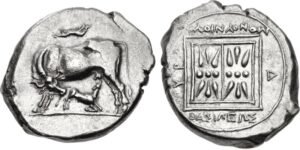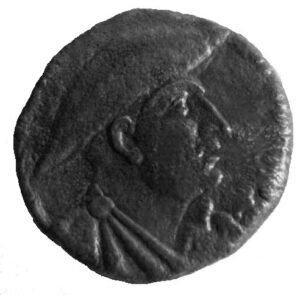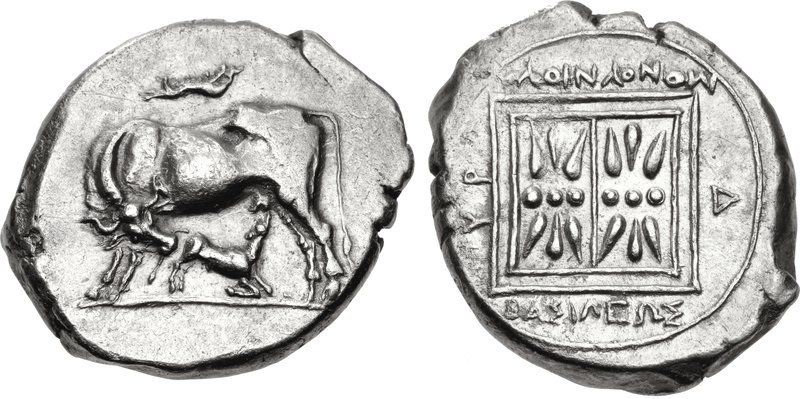Illyrian Kings and Their Coins: Monunius, Ballaios, and Gentius (Human-Style Rewrite)
Introduction (More Human & Conversational)
When most people think about ancient coins, their minds jump to Greek owls or Roman emperors. But if you look just a bit west of those powerful empires — into the rugged lands of the Western Balkans — you’ll find a lesser-known but fascinating tradition: Illyrian kings coins.
These coins weren’t minted by massive empires. They came from proud tribal rulers who wanted to stake their claim, declare their authority, and trade on their own terms. Some were bold silver issues with royal names, others were everyday bronze used in bustling Adriatic ports. But all of them carry a unique signature of a people who stood between worlds — not quite Greek, not yet Roman.
Let’s take a closer look at the three Illyrian kings whose coins we still find today — Monunius, Ballaios, and Gentius — and why their coinage still matters to collectors like us.
🥇 Monunius I – The First Illyrian Name on a Coin
Monunius wasn’t just a king — he was a statement. Around 280 BCE, while Greek cities like Dyrrachium were striking coins for commerce, Monunius stepped in and minted silver drachms under his own name. That wasn’t typical. In a world dominated by Hellenistic iconography, seeing “ΒΑΣΙΛΕΩΣ ΜΟΝΟΥΝΙΟΥ” (King Monunius) on a coin was bold.
His coins usually show a cow suckling a calf on one side — a symbol that might seem simple, but it reflects fertility, continuity, and connection to the land. On the reverse, we get sharp, geometric patterns and that famous inscription — loud and clear.
What makes these Illyrian kings coins special is that they’re not just rare — they represent a turning point. A native Illyrian leader saying, “This city, this mint, this currency — it’s ours now.”
👉 Collector’s Note: Finding one of these drachms in decent condition is tough. Prices typically start at $1,500 and can soar past $4,000, especially for coins with clear legends or well-struck obverses.
🥈 Ballaios – The Bronze King of the Adriatic
If Monunius made his mark in silver, Ballaios ruled in bronze — and he ruled big. His coins have been found in huge quantities across the Adriatic coast, from Pharos (modern Hvar in Croatia) to the inland valleys of Illyria. No other Illyrian king left behind such a massive volume of coins, and that’s part of what makes him so interesting.
Ballaios wasn’t just interested in making money — he was spreading influence. His coins show a strong, youthful bust of the king wearing a diadem, usually facing right. On the back, you’ll often find Artemis, goddess of the hunt, or Nike, the personification of victory. The inscriptions are in Greek, but the message is Illyrian: this is a sovereign king, issuing currency on his terms.
For collectors, Ballaios offers a sweet spot — his coins are accessible, affordable, and surprisingly diverse. While common types start at $50, there are rarer varieties, off-center strikes, or well-preserved examples that can reach $300 to $500 or more.
👉 Personal Tip: Look for coins where the portrait and legend are both visible — those are the ones dealers and auction houses quietly compete for.
🥉 Gentius – The Final Stand Before Rome
Gentius is a name that resonates with anyone who’s studied the fall of Illyrian independence. He was the last king to stand against Rome, and after his defeat in 168 BCE, the region was absorbed into the Roman Republic. But before that moment, Gentius minted coins — and those coins still survive, though not many.
The bronzes are small, and the legends are often fragmentary. Some show a male bust — perhaps Apollo, perhaps Gentius himself. Others depict a tripod, a horseman, or abstract symbols we haven’t fully decoded. Most include some Greek lettering, even if abbreviated.
What makes Gentius coins special is their rarity. They’re not flashy, but they’re loaded with context. Owning one feels like holding the last breath of a kingdom before it vanished.
👉 Collector Insight: Expect to pay $300 to $1,000+ for a decent bronze. Silver coins attributed to Gentius are exceedingly rare — and when one appears, it draws serious attention.
Why Illyrian Kings Coins Deserve a Spot in Your Collection
Let’s be honest — Illyrian coins don’t always get the spotlight they deserve. But if you’re looking for ancient coins with real personality, they’re hard to beat. They’re the kind of pieces that spark curiosity at coin shows and make your display case feel unique.
Here’s why collectors are paying closer attention:
-
🏛️ Historical depth – From native kings to Roman conquest
-
🪙 Striking designs – Local symbols mixed with Greek flair
-
💰 Investment potential – Low awareness now, growing demand
-
🔍 Researchable – Still a developing field with discoveries to be made
And most importantly — these coins come with stories. Not just of rulers and wars, but of identity, trade, pride, and defiance.
Final Thoughts
Whether you’re drawn to the bold silver of Monunius, the mass-minted bronzes of Ballaios, or the last gasp of independence under Gentius, Illyrian kings coins are more than just currency — they’re relics of a proud and complex people whose legacy still echoes across the Balkans.
Add one to your collection, and you’re not just buying metal — you’re preserving memory.

